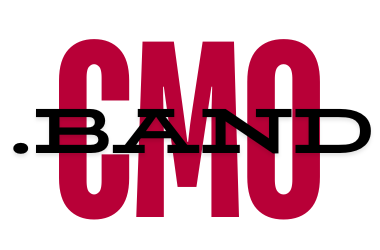Unlocking the Power of Digital Ecosystem Diagrams: A Visual Guide to Enhancing Business Connectivity
In the ever-evolving landscape of digital marketing, the ability to visualize complex networks and relationships within a business’s digital ecosystem has become invaluable. As a digital marketing expert, I’ve seen firsthand how leveraging digital ecosystem diagrams can transform strategic planning and execution. These diagrams are not just tools for representation; they are catalysts for innovation and connectivity in the digital age.
Understanding Digital Ecosystem Diagrams
A digital ecosystem diagram is a visual representation of how different entities within a business—such as platforms, people, technologies, and third-party services—interact and connect. These diagrams map out the relationships and flows between components that collectively drive digital operations. By laying out these connections visually, businesses can identify opportunities for integration, streamline processes, and optimize their digital strategies.
The Benefits of Visualizing Your Digital Ecosystem
- Enhanced Clarity and Communication: One of the primary benefits of using digital ecosystem diagrams is the clarity it brings to all stakeholders. Complex systems are broken down into understandable, manageable parts, making it easier for teams to comprehend and discuss the digital strategies in place.
- Strategic Insights and Decision Making: With a clear visual map, decision-makers can see how different elements of the digital ecosystem interact and depend on each other. This can lead to more informed decisions about where to allocate resources, how to minimize risks, and where potential bottlenecks or opportunities lie.
- Optimization of Resources: By identifying how different components of the ecosystem perform and interact, companies can pinpoint areas where resources are being underutilized or wasted. This leads to more efficient use of budgets, improved ROI, and better allocation of human capital.
- Improved Customer Experience: Digital ecosystem diagrams allow businesses to see their operations from a customer-centric viewpoint. Understanding the touchpoints and pathways through which customers interact with your business can help in crafting a smoother, more intuitive user experience.
- Facilitates Innovation: With a comprehensive view of the digital landscape, organizations can more easily spot gaps and opportunities for innovation. Whether it’s integrating new technologies or re-engineering processes, these diagrams serve as a foundation for creative thinking and strategic planning.
Crafting Effective Digital Ecosystem Diagrams
Creating a useful digital ecosystem diagram involves several key steps:
- Identify Key Components: Start by identifying all the elements that make up your digital ecosystem. This includes internal systems like CRM and ERP, digital marketing tools, social media platforms, and any third-party services or partners.
- Define Relationships: Map out how each of these components interacts with others. What are the data flows and dependencies? How do these relationships impact your operations and your customer experiences?
- Use the Right Tools: Leverage diagramming tools that allow for easy manipulation and updating of your diagrams. Tools like Microsoft Visio, Lucidchart, or even simpler platforms like Canva can be used depending on the complexity of your ecosystem.
- Keep It Dynamic: Your digital ecosystem is not static; it evolves as new technologies emerge and as your business grows. Regular updates to your diagram ensure it remains relevant and useful as a strategic tool.
- Share and Collaborate: Make your digital ecosystem diagram accessible to stakeholders across the organization. Use it as a collaborative tool to encourage input from different departments, ensuring a holistic approach to digital strategy.
Real-World Applications
Let’s consider a practical example: an e-commerce company might use a digital ecosystem diagram to visualize the customer journey from initial contact through various digital marketing channels to post-purchase follow-up via email campaigns. By mapping this out, they can identify redundancies in their marketing efforts, discover untapped opportunities for cross-channel marketing, and enhance the overall customer journey.
In another scenario, a tech startup could use the diagram to map out their SaaS product’s integration with other tools commonly used by their target market, such as CRM systems or analytics tools. This can help in identifying key integration points that could serve as selling propositions or areas needing enhancement.
Digital ecosystem diagrams are more than just a piece of complex digital art; they are strategic tools that can significantly enhance the connectivity and efficiency of business operations. By providing a clear visual representation of how various components of a business interact, these diagrams enable better communication, strategic decision-making, and ultimately, a more connected and efficient business operation. Embrace the power of visualization and watch your digital strategy transform.

A seasoned digital marketing strategist with over 8 years of experience across various areas of digital marketing, including SEO, SMM, PPC, content marketing, and email marketing. Specializes in transforming B2B, B2C, e-commerce, and SaaS businesses by creating effective go-to-market strategies and building thriving digital ecosystems. Known for a data-driven approach to optimizing campaigns and maximizing results.
“If your business is looking to scale or in need of a fresh perspective, feel free to contact”.


